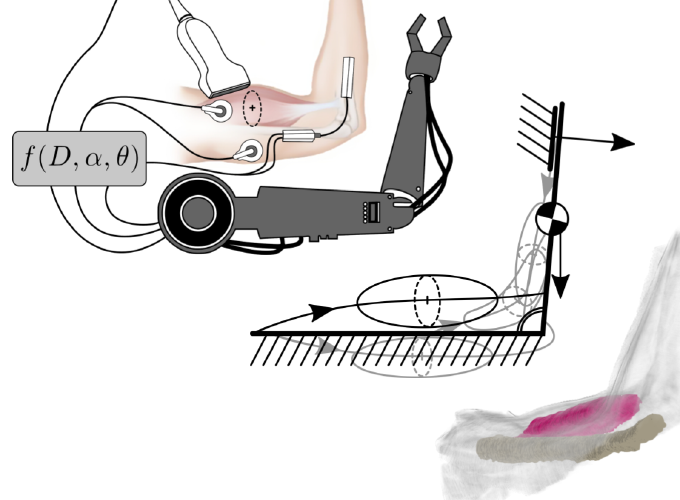
[Ph.D. Thesis] A Systematic Study of the Muscle Force–Deformation Relationship at the Human Elbow: Toward Physiology-Aware Assistive Device Control and Noninvasive Muscle Force Sensing

[Ph.D. Thesis] A Systematic Study of the Muscle Force–Deformation Relationship at the Human Elbow: Toward Physiology-Aware Assistive Device Control and Noninvasive Muscle Force Sensing
Abstract
While there exist a number of mechanically sophisticated exoskeletons, prostheses, and assistive robots, with articulations similar to those of the intact human arm and hand, these devices remain limited in their ability to augment human dexterity and safely interact with human users and collaborators. In particular, due to the limits of conventional sensing, robots remain locked in industrial cages, prosthesis users can often modulate only a single degree of freedom, and when human–device interactions do occur, we have almost no understanding of the resulting physiological impacts on the user’s musculoskeletal system.
This thesis begins to address these dual problems of device capability and safety by leveraging a novel signal class — muscle deformation, as measured via ultrasound — to probe individual muscle forces, which cannot in general be measured noninvasively but are key to understanding musculoskeletal dynamics during dexterous motion. Using the elbow flexion motion as a case study, this document describes first, preliminary characterization of this deformation and its relationship to output force; second, proof-of-concept use of this signal for a trajectory tracking task; third, collection of a comprehensive 3D deformation data set to systematically examine the force–deformation relationship; fourth, initial geometric analysis of this data set and a proposed framework for future modeling; and lastly, a discussion of the open-source release of code and data associated with this project, preliminary work on alternative sensing modalities, and speculation on future applications in robotics and medicine. This dissertation work — collectively released as the OpenArm project for collaborative research use at https://simtk.org/projects/openarm — paves the way for future investigation on both the extraction of multiple independent signals for high-dimensional device control and enhanced overall understanding of the joint human–machine dynamical system.
